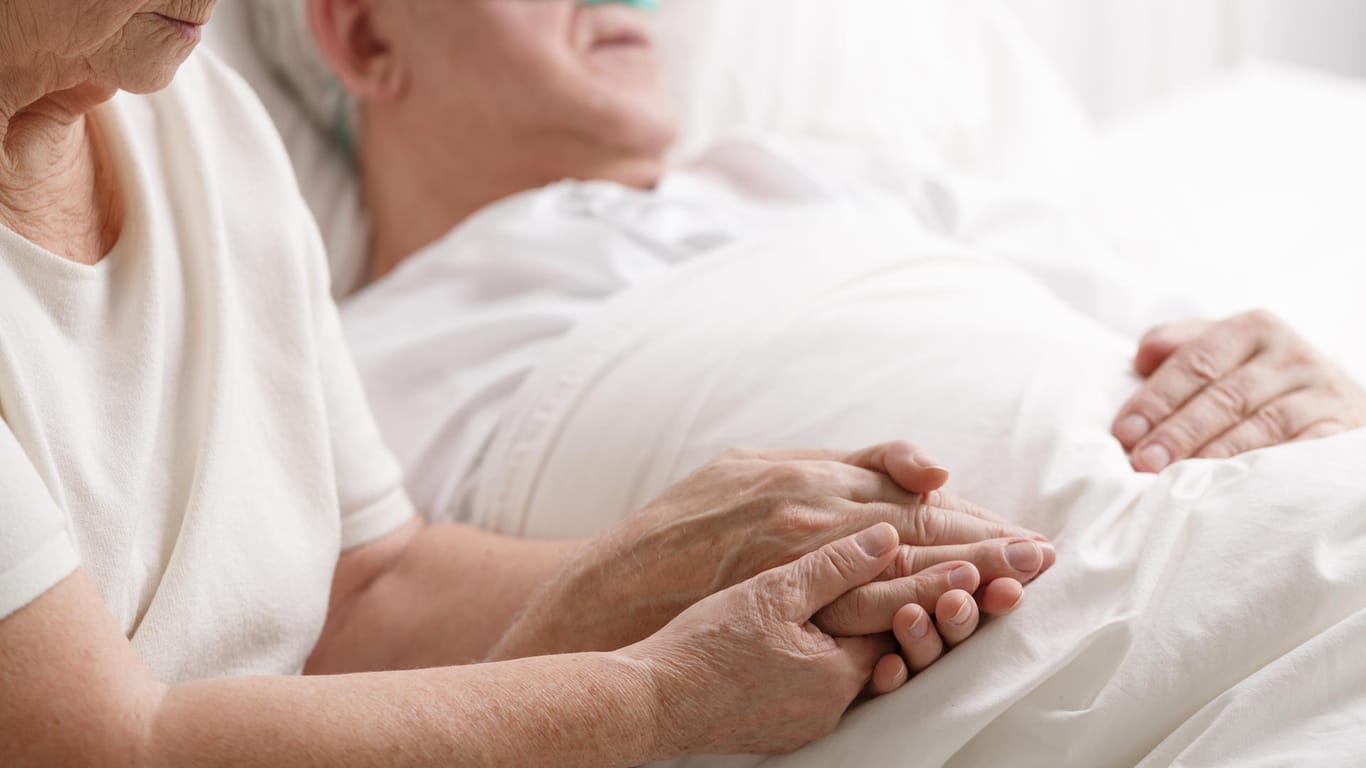
Dying: breathing stops, the heart stops beating. What goes through our minds in these final moments cannot be said with certainty.
The question of what happens after death has always concerned humanity. A number of people who were already clinically dead but were able to be resuscitated have described what impressions they had at this critical moment. What is striking is that these near-death experiences are very similar. Accordingly, many of the patients felt light and pain-free or even euphoric, and some even had the feeling that they had left their body.
Others reported walking through a tunnel with a bright light visible at the end. Some saw scenes from their lives flash by like in a movie.
What happens when a person dies
Scientists at New York University Langone School of Medicine have researched what happens after death and whether consciousness continues to function after death. They studied patients from Europe and the United States who had died of sudden cardiac arrest for over a decade . Unlike a heart attack, the heart stops beating immediately.
Dr. Sam Parnia, the leader of the study, explained in the US scientific magazine “LiveScience” that the process in which all reflexes die out, such as the gag reflex or the pupillary reflex, can continue for hours after the heart has stopped beating. just as brain cells gradually die off.
This means: Consciousness is still working when we are actually already dead. So, in a sense, the body is dead before the mind. “If there have been unsuccessful rescue efforts, the little bit of blood that has reached the brain can slow cell death,” says Parnia.
Dying is a process
Dying is therefore not an abrupt end, but a process in which the body goes through different phases, report neurobiologists and brain researchers. When the heart stops beating, the blood supply to the organs collapses. This means that the body’s cells no longer receive oxygen, nutrients or sugar molecules. The organs begin to die one by one.
The brain plays a very special role in this process: to put it simply, our thinking apparatus needs large amounts of oxygen and sugar molecules in order to work properly. Its metabolic activity per volume is around ten times higher than that of the rest of the body, and when the brain is active, the need for oxygen and sugar increases even further.
The cerebral cortex, as the seat of consciousness, requires the largest proportion of energy. When the heart no longer pumps blood through the body and the supply to the brain collapses, the cerebral cortex is affected first. This can lead to changes in consciousness, hallucinations or sensory loss, and ultimately loss of consciousness.
Undersupply causes hallucinations
The consequences for the individual brain areas in the cerebral cortex are serious. The parietal lobe is responsible for positioning our body in space and for experiencing a close connection between self and body. If this cerebral region is injured or disrupted, our self-perception begins to falter – for example, a feeling of floating or even an “out-of-body” impression can arise.
An undersupply of the lower and inner temporal lobe can also lead to unreal sensory impressions: the patient suddenly sees images, hears noises or even music, or feels euphoric.
Near-death experiences can be explained neurologically
Our memory storage is also located in the cerebral cortex. The hippocampus is responsible for storing and retrieving impressions – and it is particularly sensitive to a lack of oxygen. A malfunction can cause a huge amount of memory images to be released. This flood of images can then be perceived as a kind of “film of your own life”.
The lack of oxygen in the brain can also lead to a disinhibition in signal transmission. Sensory impressions can no longer be processed properly. Example of vision: The brain interprets the uncontrolled signals from the visual cells as a white spot, and since the cells concentrate towards the center of the visual field after eye movements stop, you see a white circle that becomes increasingly brighter towards the middle. The perception of the tunnel in some near-death patients could be explained in this way.
Cerebral cortex dies rapidly
Sam Parnia explains in LiveScience that patients who were presumed dead and were resuscitated were able to accurately describe what was happening around them. “They describe how doctors and nurses worked. They describe complete conversations and are aware of visual things that they otherwise could not have known about,” he explains in the science magazine.
How one interprets the experiences of near-death patients is up to each individual. However, the neurobiological knowledge of the brain’s malfunctions when there is a lack of oxygen shows that the brain can definitely play tricks on us in the last moments of our lives.
Then doctors declare a person dead
Ultimately, dying is an individual process; the time frame varies from person to person. But when the heart finally stops working, death comes quite quickly. The brain’s oxygen reserves are minimal. After just a few minutes, irreparable damage occurs and the cerebral cortex begins to die, according to brain researchers. Then consciousness disappears.
When breathing and unconscious reflexes gradually stop, which must be checked in a final standardized examination, the doctors declare the person dead.
